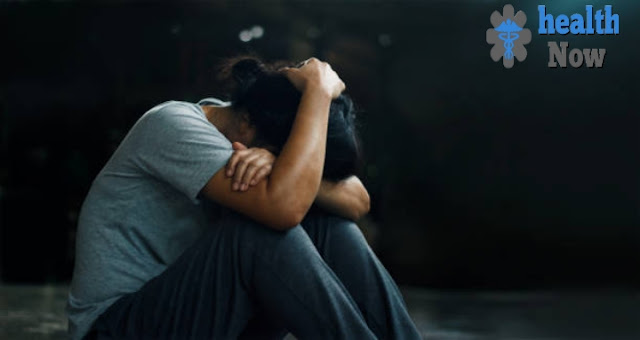What are mental disorders caused by trauma
Affected people can live with the event, have nightmares, and avoid anything that reminds them of the event. Treatment may include psychotherapy (supportive therapy and exposure) and antidepressants.
When horrific things happen, many people are permanently affected. In some cases, the effects are so persistent and severe that they are debilitating and constitute a disorder. The events that typically lead to PTSD are those that elicit feelings of intense fear, helplessness, or terror.
Sexual abuse and natural or man-made disasters are common causes of mental disorders caused by trauma. However, it can result from any seemingly overwhelming and life-threatening experience, such as physical violence or car accidents.
These events may occur directly (such as the presence of serious injury or the threat of death), or indirectly (seeing others seriously injured, killed, or threatened with death; or learning about traumatic events that happened to close family members or friends). Patients experienced a single, or, as is common practice, multiple trauma.
It is not known why the same traumatic event may cause no symptoms in one person, and PTSD may not occur throughout life in another. It is also unknown why some people witness or experience the same trauma multiple times over the years without mental injury. disorders caused by trauma., but they suffer from it after a similar incident occurs.
Mental disorders caused by trauma. Approximately 9% of people at some time during their lives, including childhood, and about 4% have this problem during any 12 months.
This disorder persists for more than 1 month. It may be a continuation of the acute stress disorder or occur separately up to 6 months after the event.
Mental disorders caused by trauma may not go away. But often it becomes less severe over time even without treatment. However, some people remain severely disabled by this disorder.
The symptoms that result from mental disorders caused by trauma
Patients with mental disorders caused by post-traumatic stress disorder (PTSD) usually have symptoms in each of the following four categories:
- Intrusive symptoms (the event invades their thoughts over and over again)
- Stay away from whatever helps them to remember the occasion
- Negative effects on thinking and mood
- Changes in alertness and reactions
Intrusive symptoms
The traumatic event may recur over and over in the form of recurring or unwanted memories or recurring nightmares. Less often, however, patients recall the events as if they were happening, rather than simply remembering them.
Patients may also have severe reactions to reminding them of the event. In veterans, symptoms may be provoked by fireworks, for example, while the symptoms of a robbed victim may be caused by seeing a gun in a movie.
Symptoms of avoidance.
Patients consistently avoid things — activities, circumstances, or people — that remind them of the trauma; for example, they may avoid entering a park or office building where they have been assaulted, or they may avoid talking to people of the same race as the abuser. Conversations about the traumatic event.
Negative influences on thinking and mood.
People may be unable to remember important parts of the traumatic event (called dissociative amnesia).
Individuals might feel genuinely numb or disengaged from others. Misery is normal, and patients show less interest in exercises they recently appreciated.
The way patients think about the event may become disordered, leading them to blame themselves or others for what happened. Guilt is also common, for example, they may feel guilty that they survived while others did not. They may only feel negative emotions. They may not be able to feel happiness, contentment, or love.
Changes in alertness and reactions
- Patients may find it difficult to sleep or concentrate.
- They may become overly alert to warning signs of dangers. They may be easily startling.
- They may become less able to control their reactions, resulting in impulsive behavior or outbursts of anger.
other symptoms.
Some people perform ritual activities to help reduce their anxiety; for example, people who have been sexually abused may shower repeatedly in an attempt to remove the feeling that they are in a state of uncleanness.
Many people with PTSD try to relieve their symptoms with alcohol or recreational drugs and develop substance use disorder.
Diagnosis.
- Patients may have been directly or indirectly exposed to that traumatic event.
- Side effects have been available for a month or more.
- Symptoms cause significant distress or significant impairment in functioning.
People have some of each type of symptoms associated with PTSD (intrusive symptoms, avoidance symptoms, negative effects on thinking and mood, and changes in alertness and reactions).
But doctors also seek to know whether symptoms could be caused by drug use or another disorder.
Mental disorders caused by trauma are often not diagnosed because they cause such diverse and complex symptoms. Substance use disorder can also distract attention from PTSD. When diagnosis and treatment are delayed, mental disorders caused by trauma can become chronically debilitating.
Treatment of mental disorders caused by trauma.
- Psychotherapy.
- Drug therapy.
Psychotherapy.
Education about mental disorders caused by trauma can. It may be an important early step in treatment. Mental disorders may be caused by trauma. It can be very confusing, and it is often very helpful for people and loved ones to understand how mental disorders caused by trauma can include. On symptoms seem unrelated.
Stress the board methods, like breathing and unwinding, are significant. Practices that lessen or control tension (like yoga and reflection) can assuage side effects and plan individuals for treatment that includes openness to the injury and instigating recollections of the pressure.
The strongest current evidence supports focused, structured psychotherapy, a type of cognitive-behavioral therapy called exposure therapy, which helps extinguish residual fear of the traumatic event.
In exposure therapy, the therapist makes patients imagine that they are in situations, circumstances, or people they are avoiding because they associate those situations or circumstances with people and the trauma; for example, the patient may be asked to imagine visiting the garden where they were assaulted.
The therapist helps people reimagine the same traumatic event. Because of the intense anxiety that is often associated with traumatic memories, supportive psychotherapy plays a particularly important role in treatment.
People who have been traumatized may be particularly sensitive to trauma again, so treatment can be stopped if things go too quickly. Often, treatment may shift from exposure therapy to more open and supportive therapy, to help patients be more comfortable in exposure therapy.
Expanded and more explored psychotherapy can also facilitate a return to a happy life, such as focusing on relationships that may be disrupted by PTSD. Other types of supportive and dynamic psychotherapy may also be helpful as long as they do not shift the focus of treatment away from exposure therapy.
Desensitization by monitoring and resetting eye movements is a form of exposure therapy. In this treatment, patients follow the therapist's moving finger with their eyes while imagining exposure to the shock. Some experts believe that the eye movements themselves help desensitize, but this method may work primarily because of exposure, not eye movements.
Drug treatment.
Indeed, even in individuals without significant sadness, antidepressants are the first-line treatment for PTSD. SSRIs and different antidepressants, for example, mirtazapine and venlafaxine, are frequently suggested.
To treat insomnia and nightmares, doctors sometimes give drugs such as olanzapine, quetiapine (an antipsychotic), or prazosin (also used to treat high blood pressure). But these drugs do not treat mental disorders caused by trauma. Himself.



